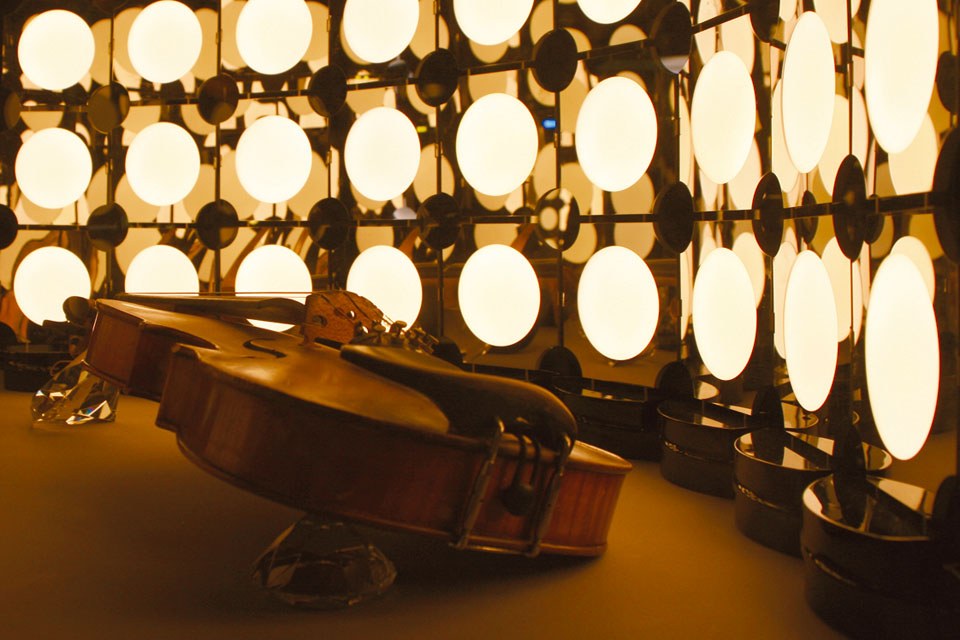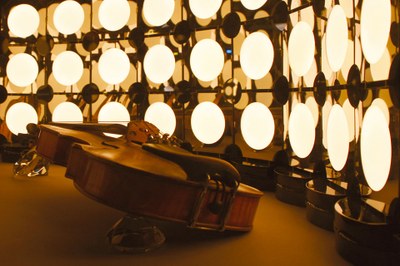First Pilot Production Line for Organic LEDs to be Installed in Germany
Osram and its LED-affiliate Osram Opto Semiconductors are driving the technology shift on the lighting market and currently building a pilot line for organic LEDs (OLEDs) in Regensburg, Germany. "We hold a leading position in the young and promising OLED market," said Martin Goetzeler, CEO at Osram. "We want to use the pilot production line to extend our lead and quickly forge ahead with development of the technology and prepare for mass production." In the next three years around 50 million euros will be invested in the new pilot production facility and in research on LED applications. Commissioning of the production line is scheduled for mid-2011.
One focus of the research work in Regensburg will be on the continued development of the manufacturing processes on the pilot line in preparation for mass OLED production. At the same time, advances in OLED product development in terms of brightness, efficiency and service life can be seamlessly transferred to production technology, thereby achieving long-term reductions in manufacturing costs.
The new facility will initially be run with around 200 employees. There are long-term plans to recruit new employees in line with market developments. Within the scope of an Innovation Alliance together with manufacturers and enterprises applying the technology, the German Federal Ministry of Education and Research is promoting research and research-related investments in the field of organic electronics. Osram's decision to invest in its Regensburg location represents a milestone within this Initiative. At the same time, the Bavarian State Ministry of Economy and the City of Regensburg are supporting progress in the innovative optical semiconductor technology. Osram is the only major opto semiconductor manufacturer with production sites for both LEDs and OLEDs in Europe. Osram invests around half of its R&D budget for exploring LEDs and OLEDs.
Alongside LEDs, organic LEDs will be the light source of the future. As with light-emitting diodes, Osram covers all integration stages with its OLEDs. The company's future portfolio will include OLED panels, modules, drivers as well as complete luminaires. At the end of last year, Osram became the first company to launch a product for installation in designer luminaires – the "Orbeos". OLEDs are ultra-flat and energy-efficient surface-emitting diodes with excellent light qualities, and Osram expects them to lead to new applications and open up new markets. Even when switched off they can be an integral part of modern design.
About Osram:
Osram (Munich, Germany) is part of the Industry Sector of Siemens and one of the two leading lighting manufacturers in the world. Sales for Osram worldwide totalled to €4.0 billion in fiscal year 2009, 88 percent of which came from outside Germany. Osram is a high-tech company in the lighting industry. Over 66 percent of sales come from energy-efficient products. This global player employs more than 39,000 people worldwide, supplies customers in some 150 countries and has 46 production facilities in 17 countries (30 September 2009). www.Osram.de
About Osram Opto Semiconductors:
Osram is part of the Industry sector of Siemens and one of the two leading lighting manufacturers in the world. Its subsidiary, Osram Opto Semiconductors GmbH in Regensburg (Germany), offers its customers solutions based on semiconductor technology for lighting, sensor and visualization applications. Osram Opto Semiconductors has production sites in Regensburg (Germany) and Penang (Malaysia). Its headquarters for North America is in Sunnyvale (USA), and for Asia in Hong Kong. Osram Opto Semiconductors also has sales offices throughout the world. For more information go to www.Osram-os.com.


